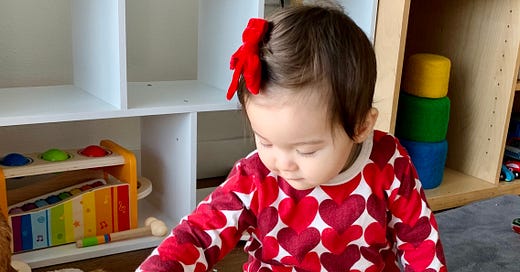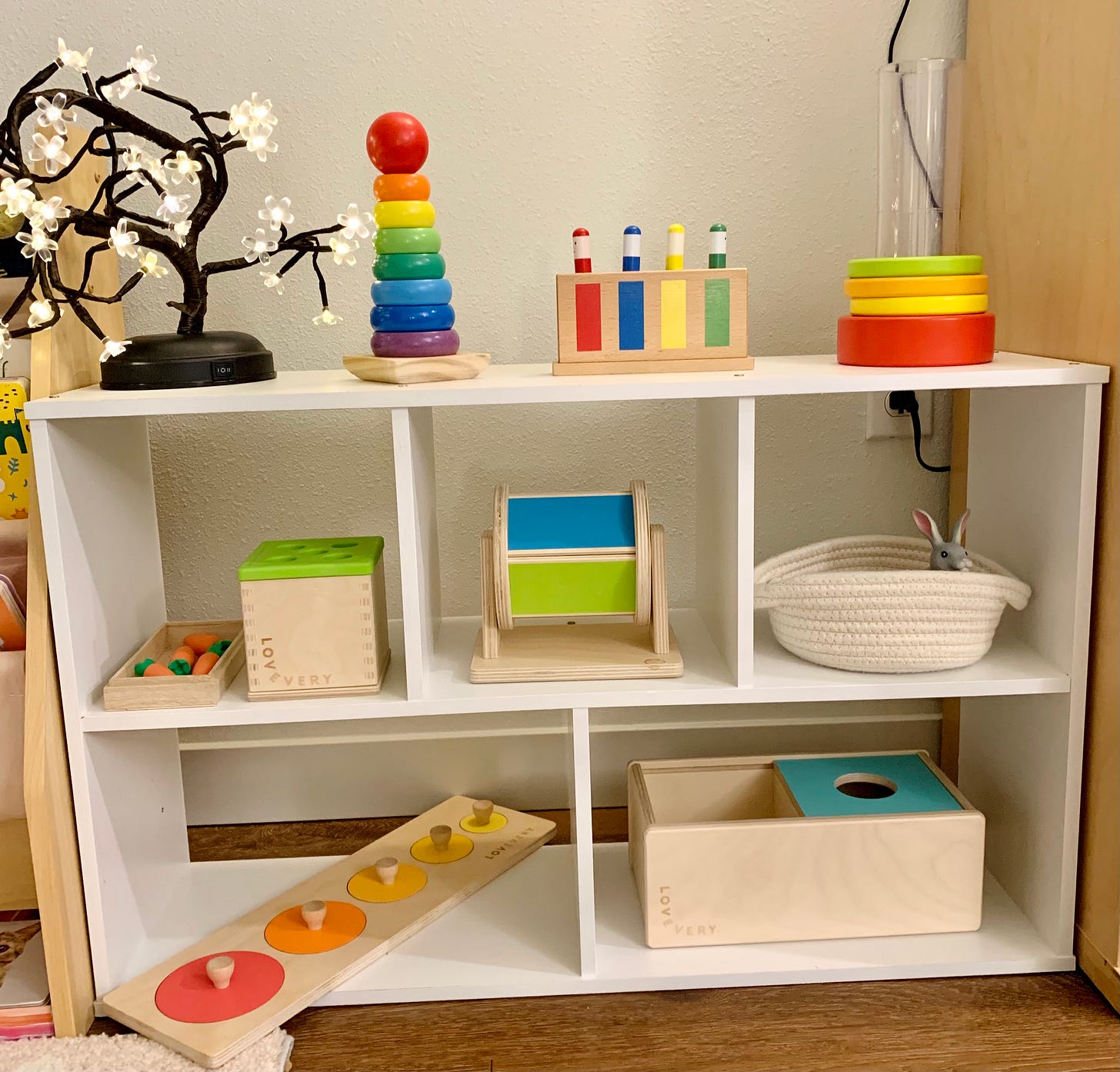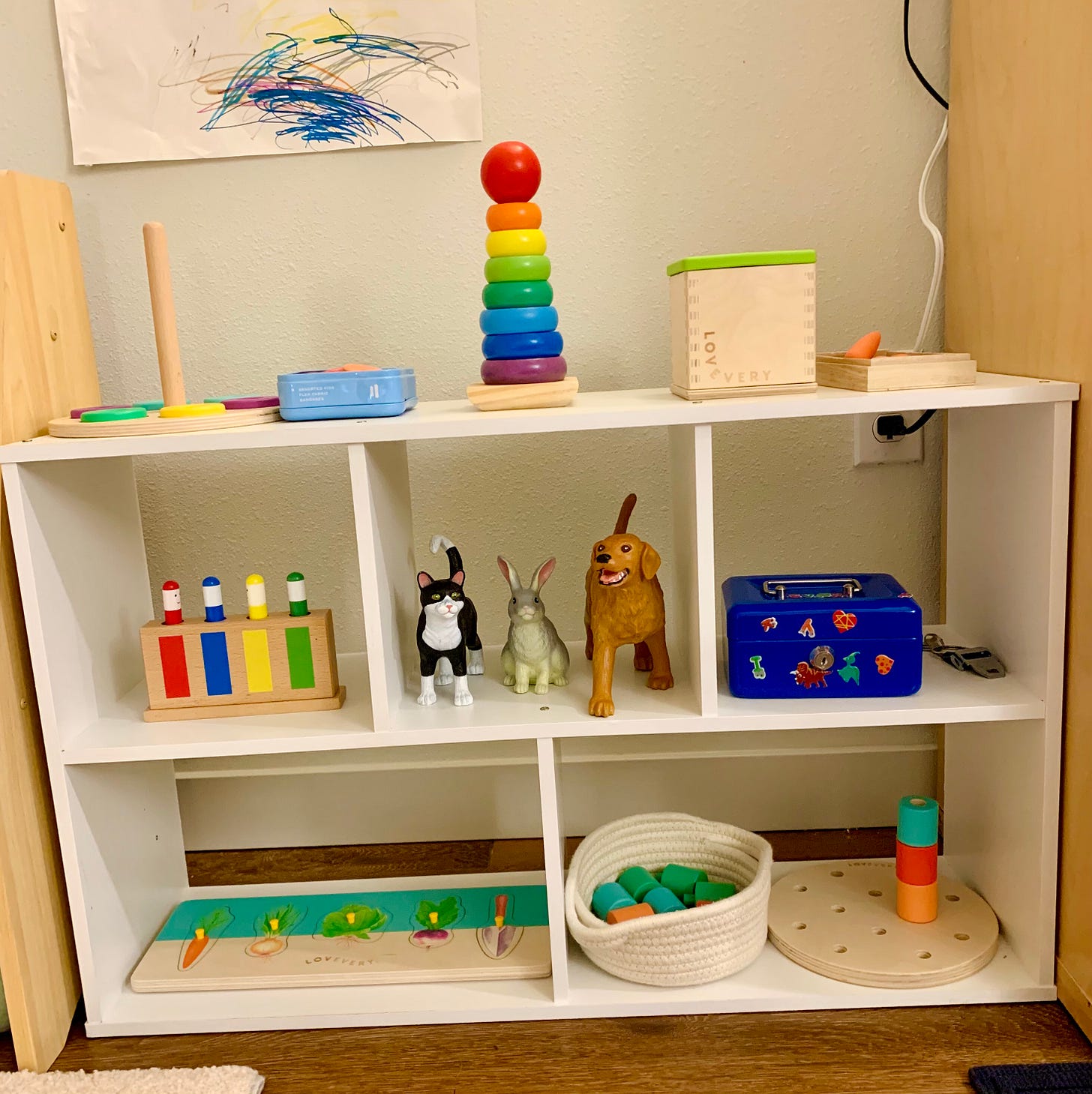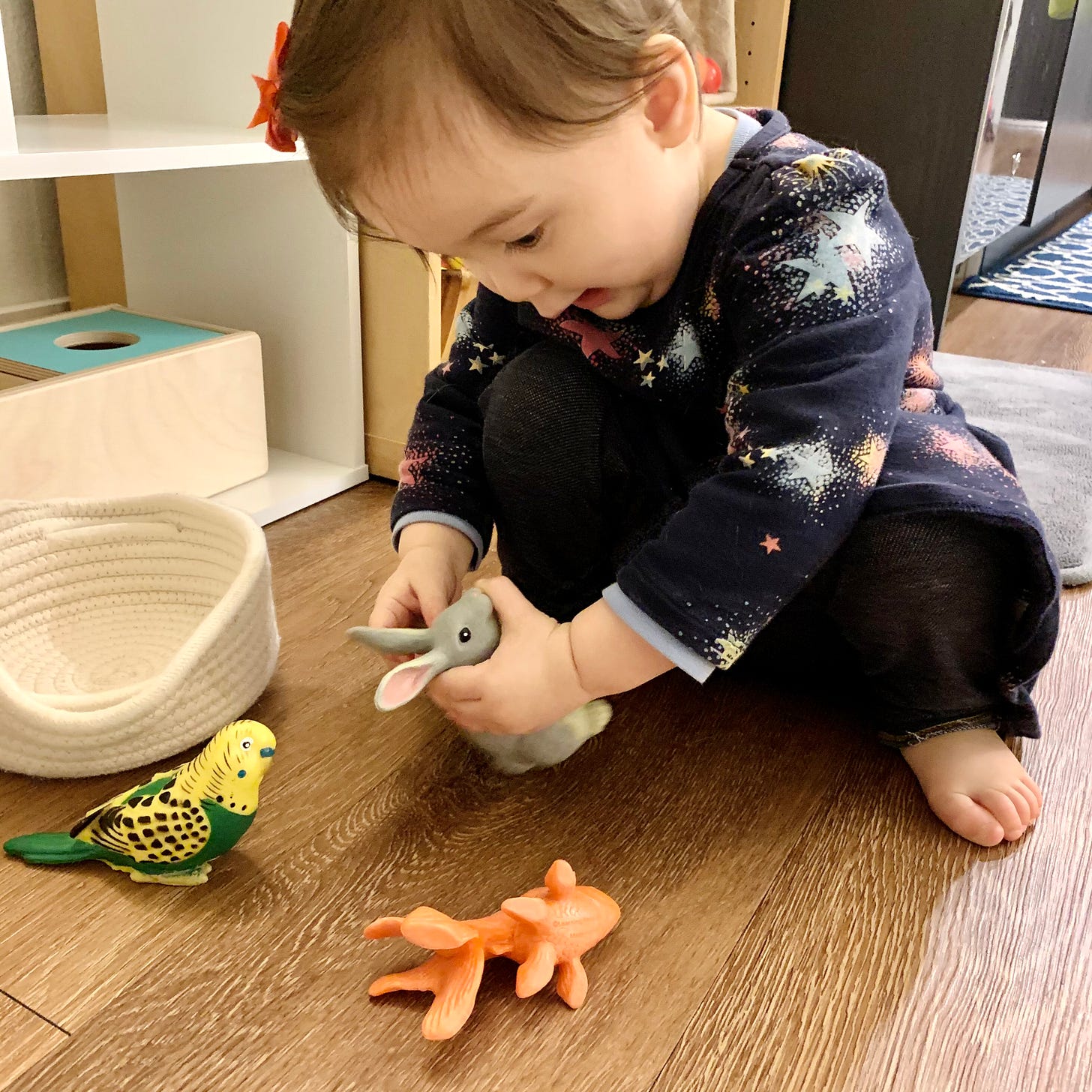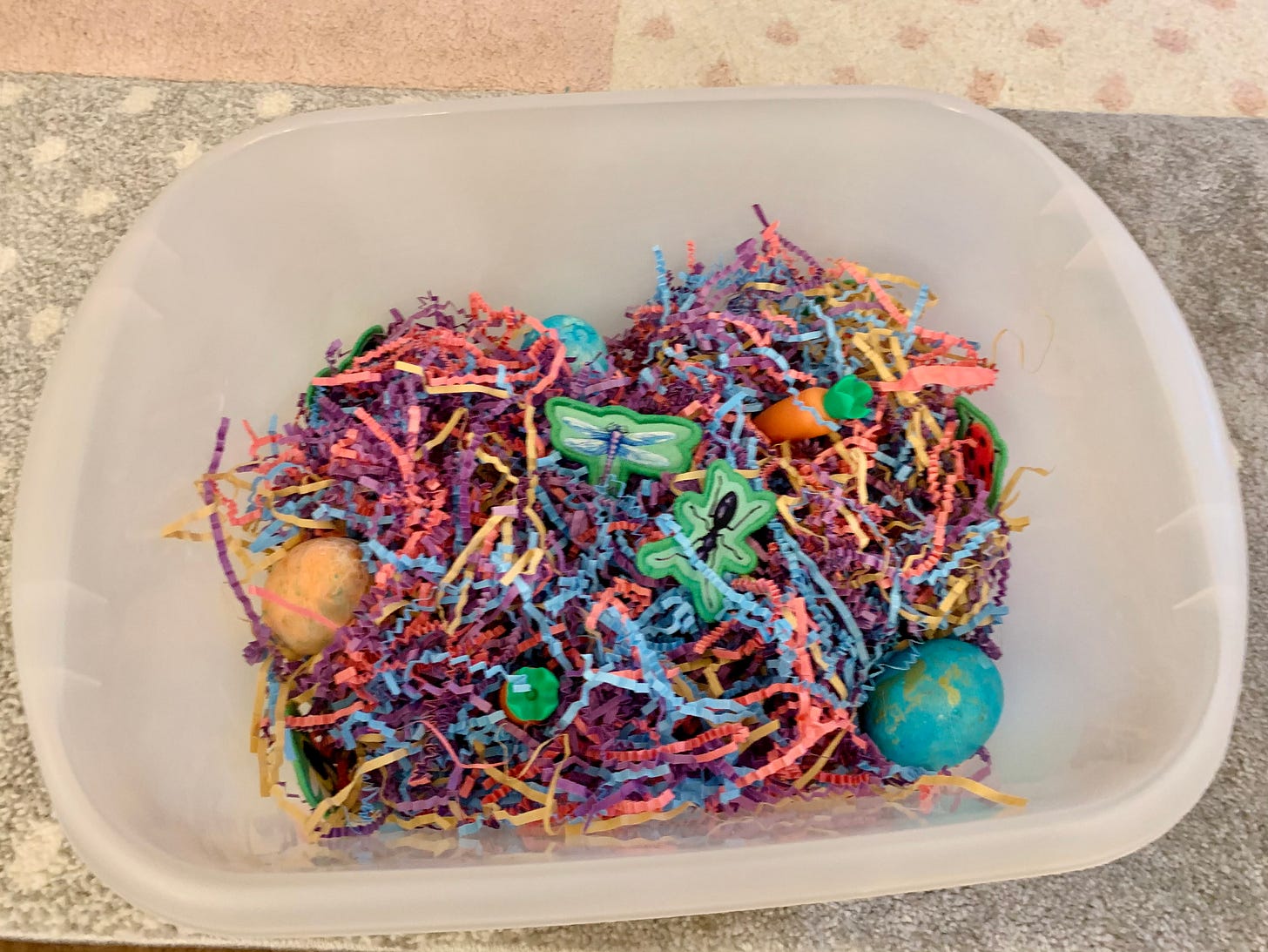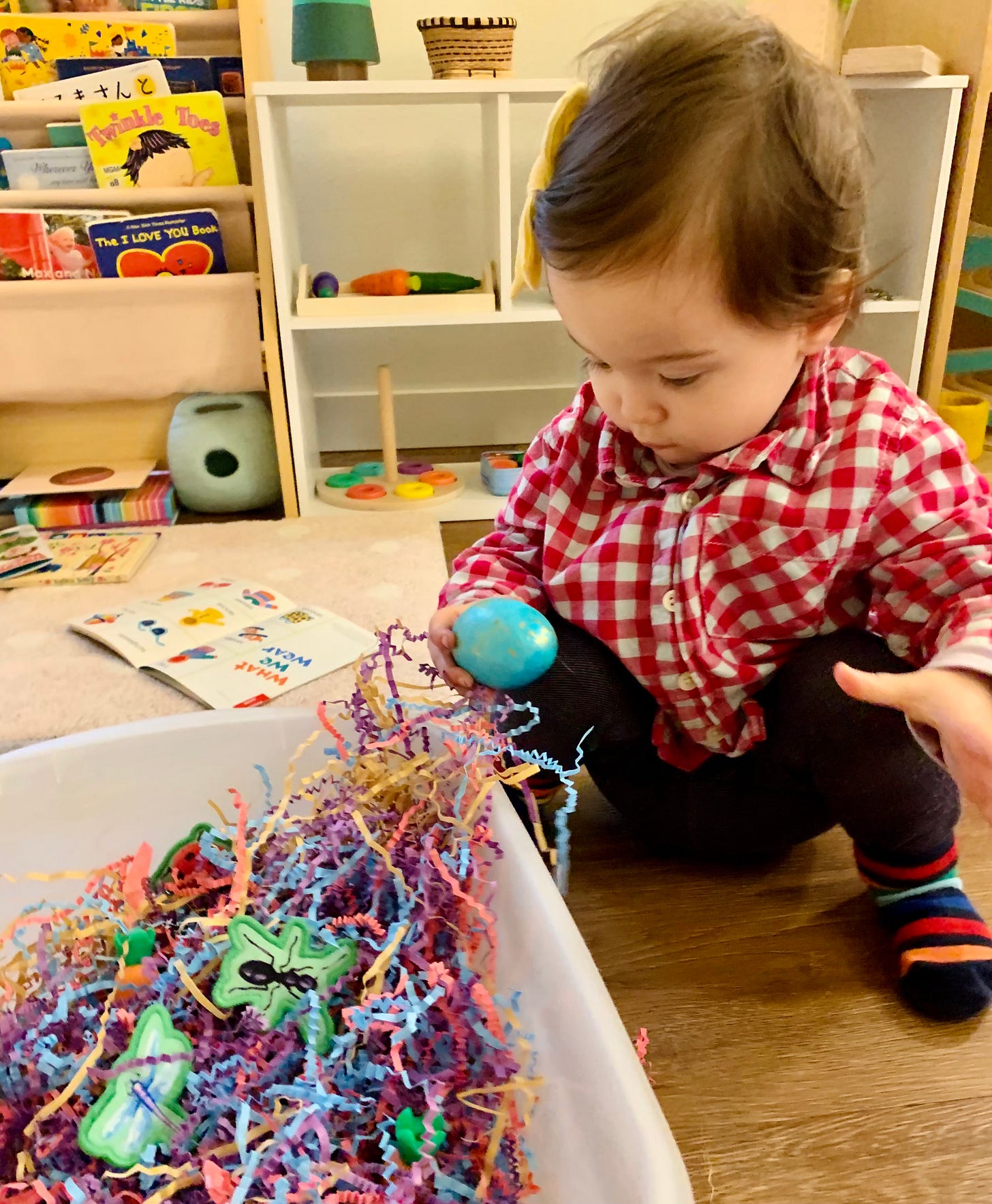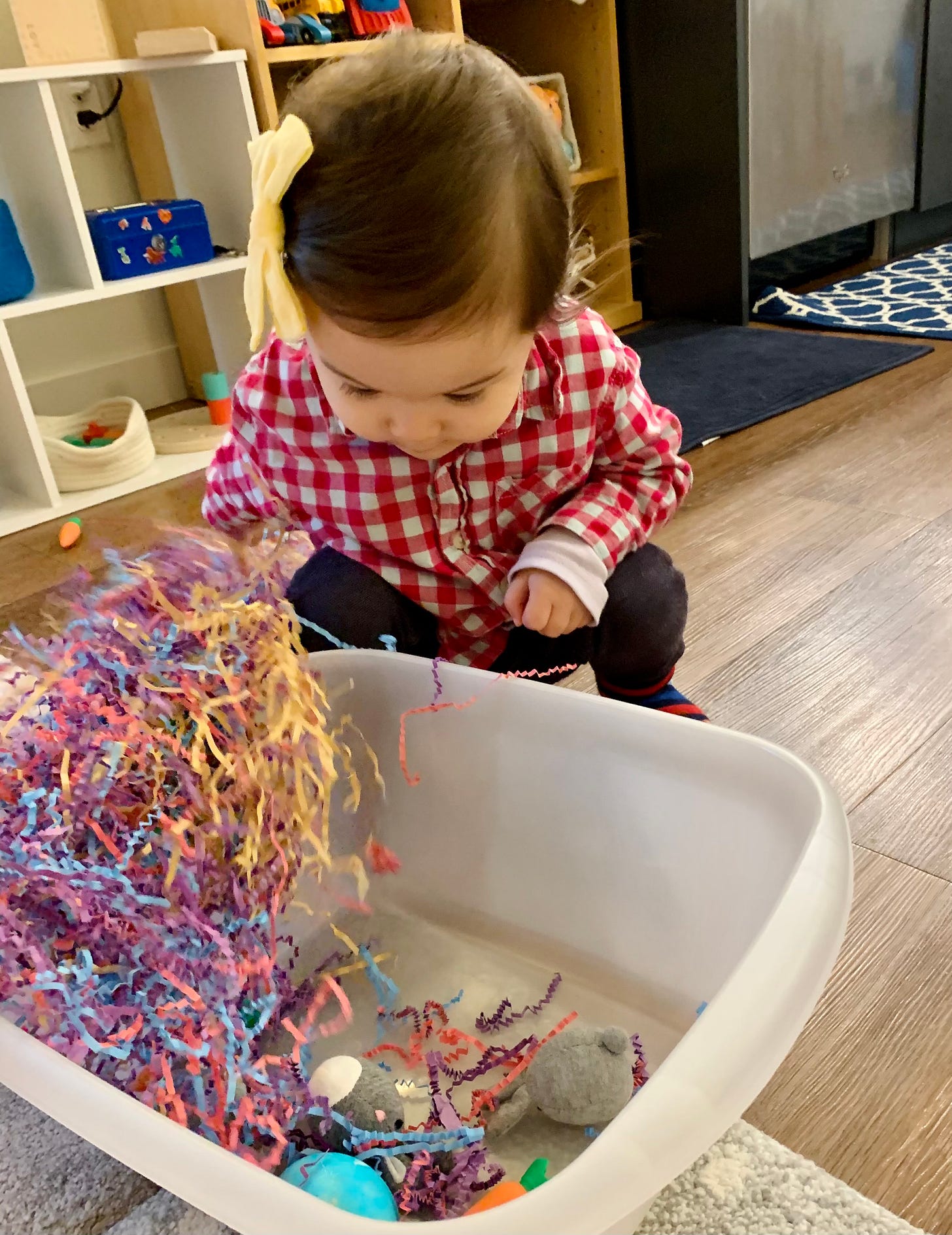The Hows and Whys of Montessori Toy Rotation
How and why you should rotate your child’s toys, hide and seek sensory fun, and more!
As L gets older, it’s so much fun seeing her play change. Now that she is 17 months, I am beginning to see her really enjoying playing with her stuffies and baby doll and imitating taking care of them, giving them kisses, and even rocking her baby doll!
Toy rotation is something that I’ve done from the beginning for L. It just made sense to me that her work would follow her interests and abilities and that leaving too many choices for her could be overwhelming and counter-productive. I’ve always observed her and left out a small number of toys I knew she would work with and save the rest for another time.
Why Rotate Toys
Toy rotation benefits are really two fold (please read the links below for more specific benefits!): it reduces both your child’s stress and your own, and it fosters an environment that promotes sustained focus.
One way toy rotation reduces your child’s stress simply by giving them less choices to make. It also reduces their stress by creating an environment that is neat and orderly. By having less toys out at once, it is easier to understand where each toy belongs. With fewer toys, there is less clutter and more space. It also makes it easier when it comes time to clean up! And, it can help you become a calmer and more relaxed parent.
Toy rotation promotes focus. There is less distraction from having so many toys around. It also allows you to put out only toys that interest your child in the moment. In this way, children are more likely to engage with the materials for longer periods of time.
You can read more about the benefits of toy rotation here and here.
How to Rotate Toys
Begin by observing your child and what skills and materials they seem to gravitate toward recently. Choose 6-10 toys that seem to fit there current interests and developmental level.
Here is L’s current shelf at 17 months:
She is interested in stacking, fine motor skills, and containment recently so most of these materials work those skills.
It is important to note that for young toddlers and infants, shelf work will really very greatly from day to day and week to week so don’t give up if they don’t seem interested. Just keep observing. Focus and attention for this age level looks very different that what we might think.
You can read more about what focus looks like for this age group here.
All the toys and materials that are not in use (everything apart from those 6-10 toys) gets put in storage until a time when your child is expressing interest in those toys/the skills associated with them.
I typically reassess L’s toys every week checking which she as interacted with, which she hasn’t at all, and which she has mastered completely. I only rotate out the toys that she has not touched on at least a week and those she has mastered completely and are too easy for her (unless she is still playing with it often, then I leave it out).
You can read more about when to rotate toys here.
What to do with Toys that are Out of Rotation
All the toys that are not in rotation at the moment are stored out of sight and ideally in a place your child can’t access. We live in a small urban apartment, so I keep the toys that L is not using in my closet and in a nightstand dresser. It is getting harder as she gets older and is accumulating more toys, but I haven’t ran out space yet with just a small area of my closet and a small dresser!
A great thing about many of the materials and toys I have for L is that they can be used in different ways at different ages! It saves me from accumulating too many toys and from her only using each toy a short while. Most of these toys are Montessori toys and those from the Lovevery play kits.
Here and here are what some other parents have done for toy storage and organization.
A Couple of Great Resources for You this Month:
Check out this article by Janet Lansbury about Respectful Parenting and how it may appear “weird” to those unfamiliar with respectful parenting philosophy.
Here is another wonderful and inspiring article by Teresa of Montessori in Real Life with some great Nature-based Spring activities!
This article by Tracy of Raised Good is a wonderful reminder about how young children process emotion and we can meet them where they are at dealing with and processing their emotions.
A Spring Hide and Seek Sensory Activity:
This activity came about as L was VERY interested in the Easter eggs she died still and we had already had an egg hunt around the house. This was my way of offering them to her in a new, fun experience!
I simply filled her sensory bin with crinkled cut paper (from her Easter basket), added three of the eggs she died last weekend, and hid some play carrots, bunnies, and bugs from her self! I let her explore how she wanted. She continuously found and re-hid the eggs and didn’t focus too much on the other items I hid! She did have a great time and enjoyed the activity immensely!

